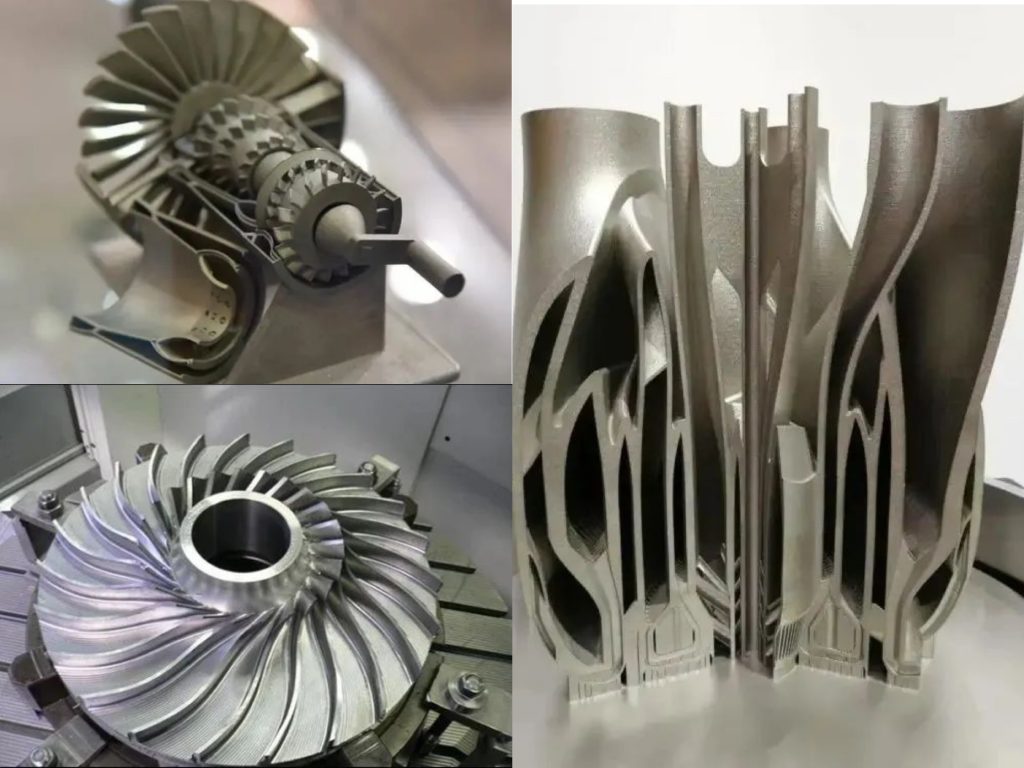Titanium is an element with atomic number 22 in the periodic table, a subgroup element of the fourth cycle, i.e., Ⅳ B flag, which has zirconium and hafnium in addition to titanium, and is characterized by its common feature of a high melting point and the formation of a stable oxide film on its surface at room temperature.

Top Ten Properties of Titanium
1、Low density, high strength, high specific strength
Titanium density is 4.51g/cm3, 57% of steel, titanium is less than two times heavier than aluminum, three times stronger than aluminum. Titanium alloy specific strength (strength / density ratio) is commonly used in industrial alloys in the largest (see Table 2-1), titanium alloy specific strength is stainless steel 3.5 times; aluminum alloy 1.3 times; magnesium alloy 1.7 times, so it is the aerospace industry is essential to the structure of the material.

2、Excellent corrosion resistance
The passivity of titanium depends on the presence of an oxide film, and it is much more resistant to corrosion in oxidizing media than in reducing media. High rate corrosion occurs in reducing media. Titanium does not corrode in some corrosive media, such as seawater, wet chlorine gas, chlorite and hypochlorite solutions, nitric acid, chromic acid, metal chlorides, sulfides, and organic acids. However, in media that react with titanium to produce hydrogen (e.g. hydrochloric and sulfuric acids), titanium usually has a large corrosion rate. However, if a small amount of oxidizing agent is added to the acid, a passivation film will form on the surface of titanium. Therefore, titanium is corrosion-resistant in strong sulfuric acid-nitric acid or hydrochloric acid-nitric acid mixtures, and even in hydrochloric acid containing free chlorine. The protective oxide film of titanium is often formed when the metal encounters water, even in small amounts of water or water vapor. If titanium is exposed to a strongly oxidizing environment in the complete absence of water, rapid oxidation occurs and violent reactions and even spontaneous combustion often occur. Such phenomena have occurred when titanium reacts with fuming nitric acid containing excess nitrogen oxide, and when titanium reacts with dry chlorine gas. Therefore, a certain amount of water is necessary to prevent such reactions.

3、Good heat resistance
Usually aluminum at 150℃, stainless steel at 310℃ hat is the loss of the original performance, and titanium alloy at 500℃ or so still maintain good mechanical properties. When the aircraft speed reaches 2.7 times the speed of sound, the surface temperature of the aircraft structure reaches 230℃, aluminum alloys and magnesium alloys can not be used, while the titanium alloy can meet the requirements. Titanium’s heat resistance is good, it is used for aero-engine compressor disk and blade and the skin of the rear fuselage of the aircraft.
4、Good low temperature performance
Certain titanium alloys (such as Ti – 5AI – 2.5SnELI) strength with the reduction of temperature and increase, but the plasticity of the reduction is not much, at low temperatures still have good ductility and toughness, suitable for use at ultra-low temperatures. Can be used in dry liquid hydrogen and liquid oxygen rocket engines, or in manned spacecraft for ultra-low temperature containers and storage tanks.

5、Non-magnetic
Titanium is non-magnetic, it is used in submarine hulls and does not cause mines to explode.
6、Small thermal conductivity
A comparison of the thermal conductivity of titanium with other metals is shown in Table 2-2.

Titanium’s thermal conductivity is small, only 1/5 of that of steel, 1/13 of that of aluminum, and 1/25 of that of copper. poor thermal conductivity is one of titanium’s disadvantages, but it is a feature that can be exploited in certain situations.
7、Low modulus of elasticity
A comparison of the modulus of elasticity of titanium with other metals is shown in Table 2-3.

The modulus of elasticity of titanium is only 55% of that of steel, and the low modulus of elasticity is a disadvantage when used as a structural material.
8、The tensile strength is very close to the yield strength.
Ti-6AI-4V titanium alloy tensile strength of 960MPa, yield strength of 892MPa, the difference between the two only 58MPa, see Table 2-4.

9、Titanium is easily oxidized at high temperatures.
Titanium has a strong bond with hydrogen and oxygen, so care should be taken to prevent oxidation and hydrogen absorption. Titanium welding should be carried out under argon protection to prevent pollution. Titanium tube and sheet should be heat-treated under vacuum, titanium forgings heat treatment to control the micro-oxidizing atmosphere.
10、Low damping resistance
If you make bells of the same shape and size out of titanium and other metal materials (copper, steel), and strike each bell with equal force, you will find that the bells made of titanium oscillate for a long time, i.e., the energy given to the bells by striking does not disappear easily, and so we say that titanium has low damping properties.
Three special functions of titanium
- Shape memory function refers to the ability of Ti-50%Ni (atomic) alloy to recover its original shape under certain temperature conditions, and this material is called shape memory alloy.
- Superconducting function refers to NbTi alloy, when the temperature drops to near absolute zero, NbTi alloy made of wire, will lose resistance, any large current through, the wire will not heat up, there is no energy consumption, NbTi is known as superconducting materials.
- Hydrogen storage refers to the TiFe-50% Fe (atomic) alloy, which has the ability to absorb large amounts of hydrogen. Utilizing this feature of TiFe, hydrogen can be safely stored, i.e., it is not necessary to use steel high-pressure cylinders to store hydrogen. Under certain conditions, TiFe can also be used to release hydrogen, and TiFe is known as an energy storage material.



